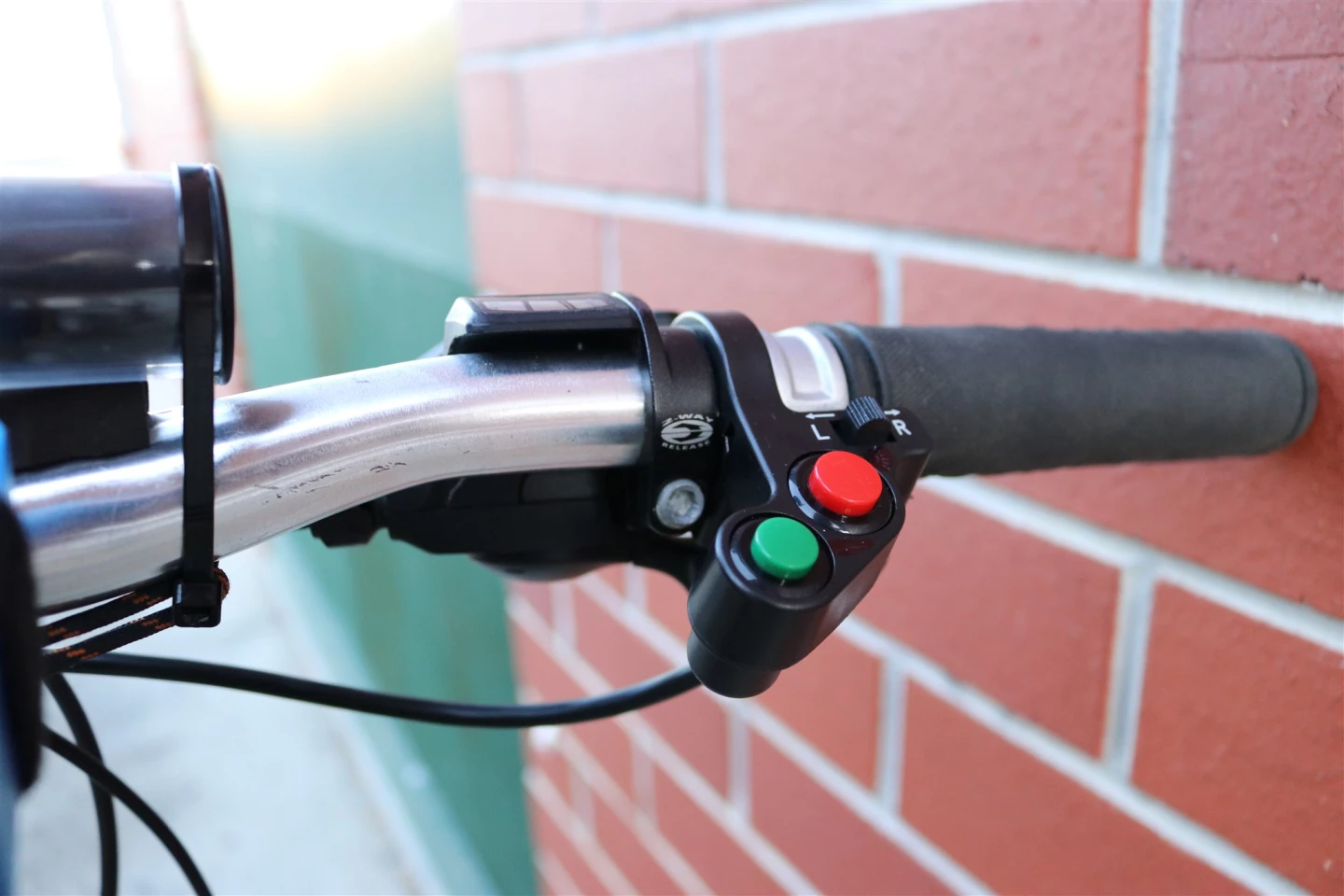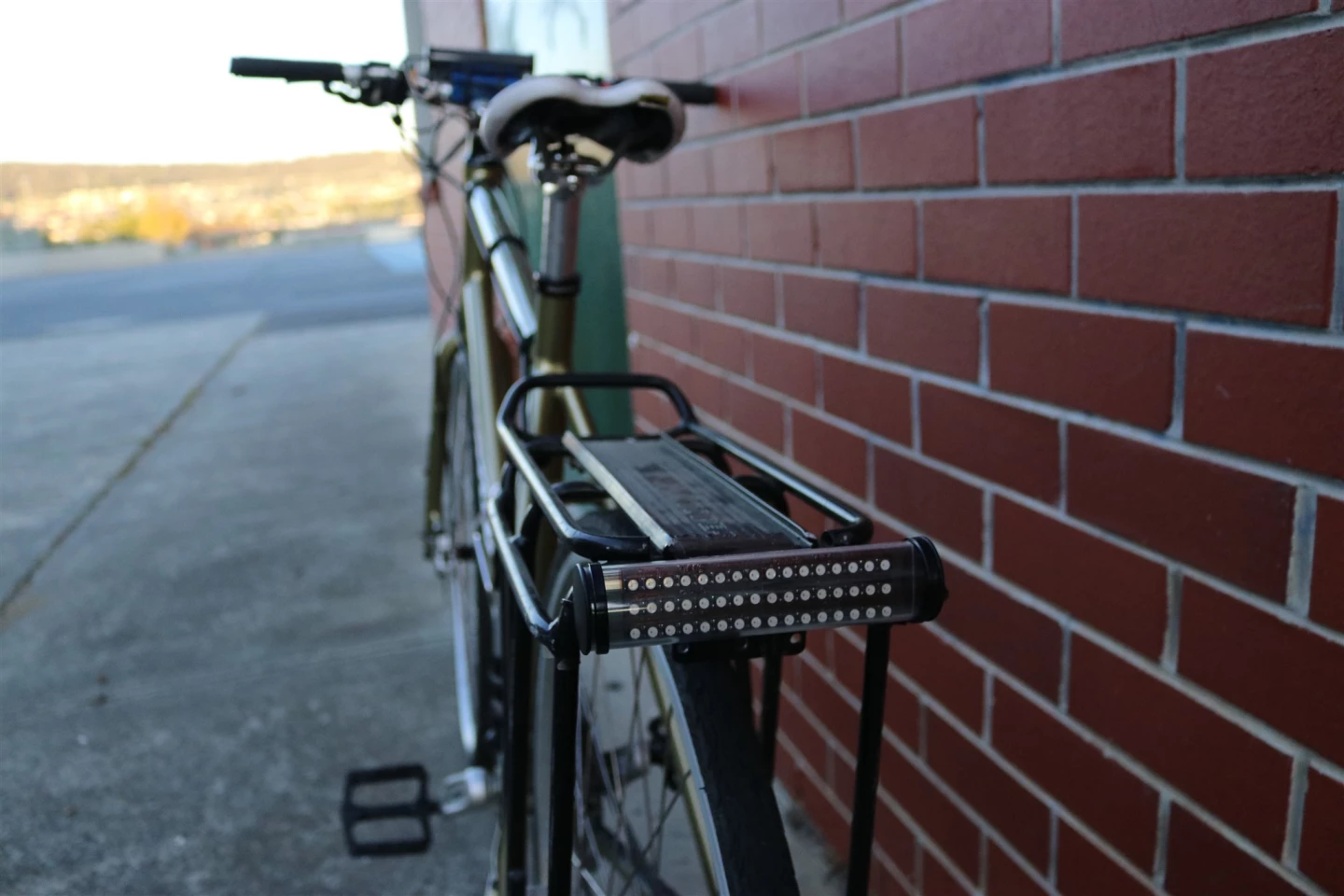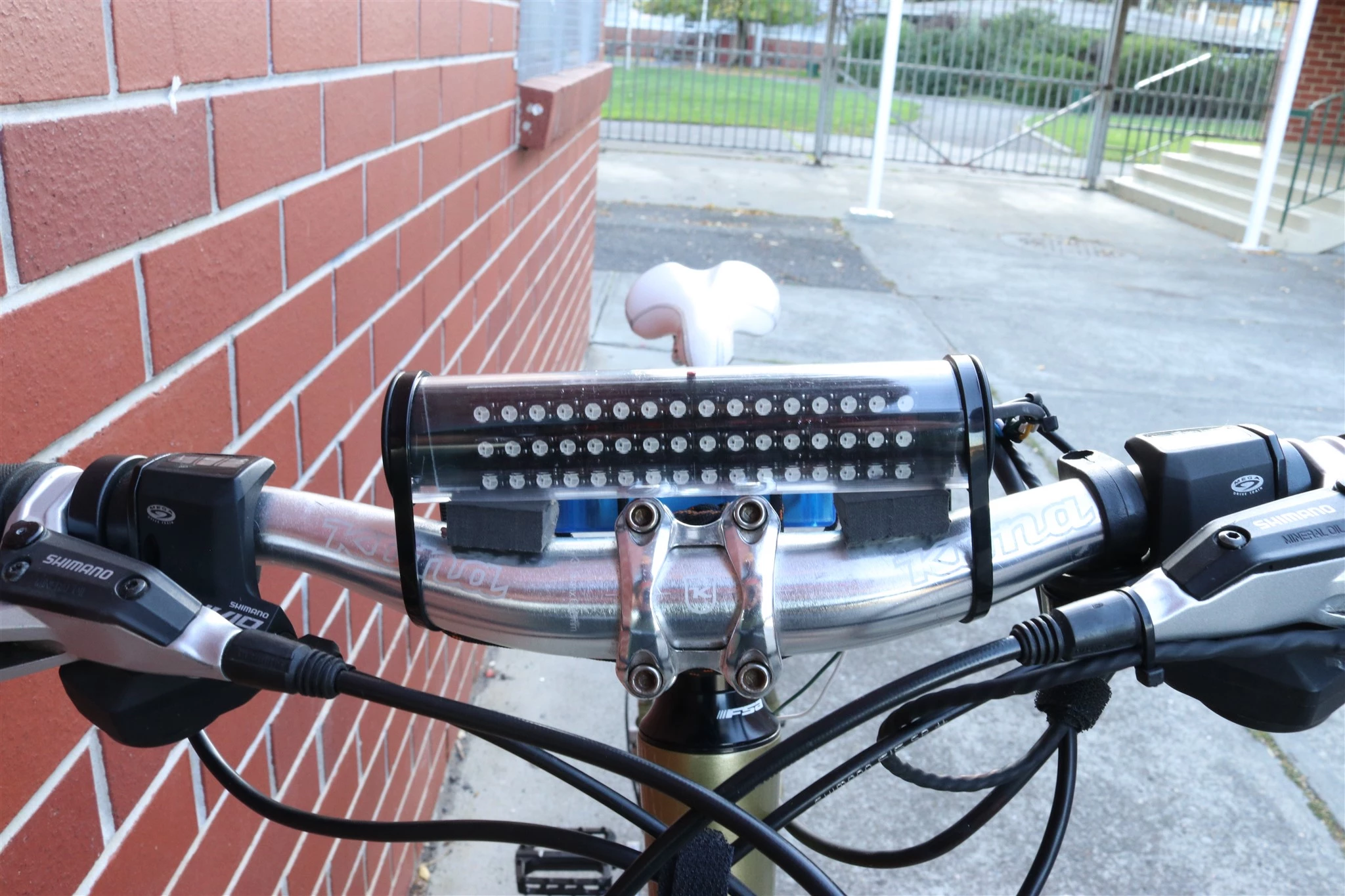While some urban bicycle commuters are content with a simple head- and tail light, others really want to make sure that they're seen by motorists. Such folks will likely take a shine to the VizRide system, which packs a total of 96 LEDs.
VizRide was created by Dennis Grubb, a retired electronics engineer who lives in Hobart, Australia. It combines running lights with turn indicators and brake lights.
The system incorporates two lighting modules, one for the front and one for the back. Each watertight unit contains a total of 48 RGB LEDs – arranged in three rows of 16 – within a 5.5-inch (140-mm) transparent polycarbonate tube. At the highest output setting, each module delivers approximately 1,300 lumens. And while the LEDs could be set to various colors, the obvious choice would be to have the forward-facing ones white and the rear-facing ones red.
Whatever the case, during daily use the LEDs default to a rapidly flickering Running Light mode.
When making turns, however, the rider announces their intentions by thumb-pressing a button on a handlebar-mounted controller. Doing so causes the LEDs in both modules to sequentially illuminate in the direction of the upcoming turn (not unlike the indicators on an Audi). A clicking sound emitted by the controller reminds the rider to switch off the signal, once they've made their turn.

When the rider squeezes the brake lever to slow down, a magnetic sensor on that lever triggers both modules to temporarily illuminate more brightly, thus serving as brake lights. Dennis tells us that while the sensor is currently only on the rear brake lever, sensors certainly could be installed on both levers. And importantly, if the rider hits the brakes while making a turn, the modules illuminate as both turn indicators and brake lights simultaneously – one function doesn't override the other.
The whole system is powered by a 3,000-mAh lithium battery, that should be good for approximately five hours of runtime per charge. Plans call for that battery to ultimately be located either in the front module or slung beneath the bike's top tube.

Grubb is currently seeking industry partners who may be interested in commercializing the technology. He can be contacted at Dennis.Grubb.409@iinet.net.au
"The innovation of adding indicators, brake lights and day riding lights to cycles, cargo bikes, ebikes and scooters lessens the risk of danger to riders, pedestrians and drivers of motor vehicles, and is therefore beneficial to all," he says.
You can see the VizRide system in use, in the video below.






